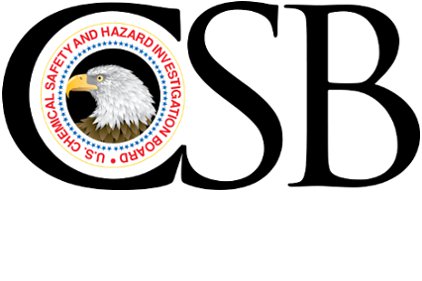 The U.S. Chemical Safety Board (CSB) has formally voted to classify the American Petroleum Institute’s (API) response to the Board’s recommendation to develop an effective system of performance safety indicators as “Open- Acceptable Action.”
The U.S. Chemical Safety Board (CSB) has formally voted to classify the American Petroleum Institute’s (API) response to the Board’s recommendation to develop an effective system of performance safety indicators as “Open- Acceptable Action.”
The announcement was made today at a two-day public hearing convened by the CSB in Houston, Texas, on the overall subject of applying performance indicators onshore and offshore. API developed Recommended Practice (RP) 754 entitled “Process Safety Performance Indicators for the Refining and Petrochemical Industries,” following a 2007 CSB recommendation “to develop an effective system of indicators to evaluate performance and implement these measures to continually improve the management and control of process safety risks.” The recommendation was issued jointly to the API and the United Steelworkers Union (USW); both groups initially accepted the recommendation but the USW later withdrew from the standards development process citing imbalances in the committee composition.
“Open-Acceptable Action” means the Board considers the API is moving in the right direction, but that more remains to be done to meet the intent of the recommendation.
The recommendation resulted from the CSB’s investigation into the March 2005 explosion and fire at the BP Texas City Refinery that killed 15 workers and injured 180 others. The CSB investigation found that the incident was caused by multiple technical, system and organizational deficiencies; as a result, the CSB issued recommendations to BP at the corporate and facility levels, and to OSHA, the API, the United Steelworkers (USW), and the Center for Chemical Process Safety.
CSB Chairperson Dr. Rafael Moure-Eraso said, “We are pleased that API is actively addressing the issue of indicators, but believe that input from all stakeholders is necessary to develop additional more robust leading indicators to compare performance across industry. Among the most important findings of the investigation into the 2005 accident was that BP and the oil refining and chemical sectors did not have an effective system of indicators to evaluate their safety performance sufficient to determine the potential for a major catastrophe; BP and industry sectors were instead typically using personal safety indicators such as slips trips and falls to measure safety performance. Leading indicators provide data on the health of these critical safety systems before a gas release or spill occurs. Often the difference between a lagging event and a catastrophic one is merely the lack of an ignition source. Industry needs effective leading indicators capable of reducing the risks of catastrophic failures such as the 2005 accident at BP Texas City.”
API Recommended Practice 754 is a 25-page document that includes examples of how to categorize incidents according to the RP’s definitions, and a second document explaining the basis for categorizing hazardous chemicals by threshold quantities.
CSB Recommendations Director Dr. Manuel Gomez said, “The backbone of the newly developed recommended practice is the use of a tiered system that provides a useful framework of indicators that range from clearly defined consequences referred to as ‘lagging’ to variables that are likely predictors of serious process failures which are referred to as ‘leading.’”
At the public hearing, the CSB discussed its formal evaluation and detailed the strengths and weaknesses of the newly developed RP.
The CSB determined that the API Recommended Practice highlights the need and importance for the use of process safety indicators throughout industry and creates a useful scheme for developing effective process safety metrics.
API RP 754 counts incidents and hours worked by contractor workers in the indicator measures. The CSB noted that the experience of contract workers has been generally absent from previous indicator measures used or reported by the industries, and represents an important step forward.
In the development of the board’s evaluation the CSB also noted several serious shortcomings of API RP 754. Specifically, the Board found that its indicator definitions place undue emphasis on lagging measures that are too infrequent to be useful to drive performance improvements, yet do not comprehensively count and report a likely sizable number of “leading” measures that can be considered to be predictors of potentially serious process failures, and could therefore play a more critical prevention role.
The Board also found that the guidance for public reporting of indicators will not effectively permit regulators or the public to evaluate the performance of individual sites and many corporations. The intent of the recommendation was for public reporting that would allow stakeholders—including regulators, the workforce and the communities surrounding high-risk facilities—to understand how well they were performing in comparison to similar facilities around the country and to national averages. However, companies that choose to follow the recommended practice need only report to the public on relatively rare but serious process incidents. Leading indicators which have greater preventative value need not be publically reported at all and are only developed on a site specific basis missing an important opportunity to use these key metric for comparisons and performance improvements across companies and industry.





